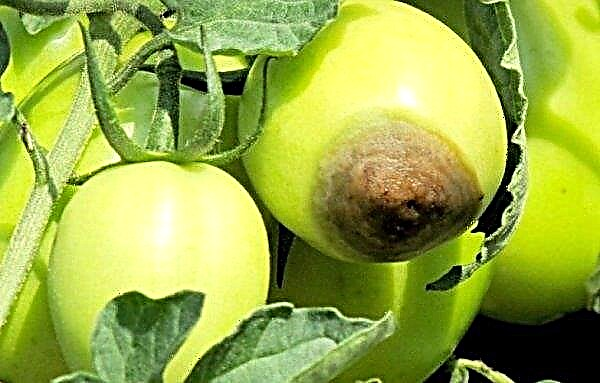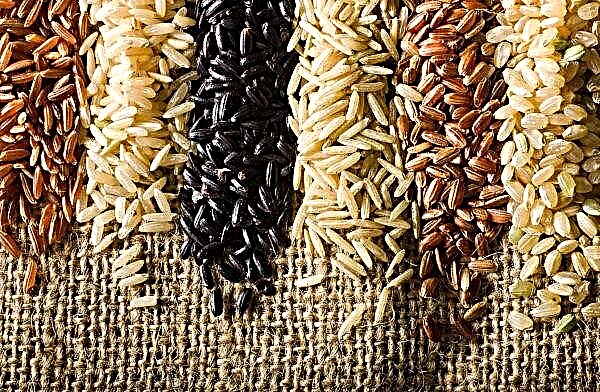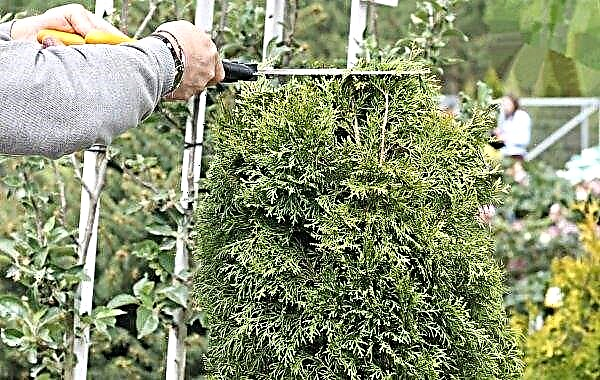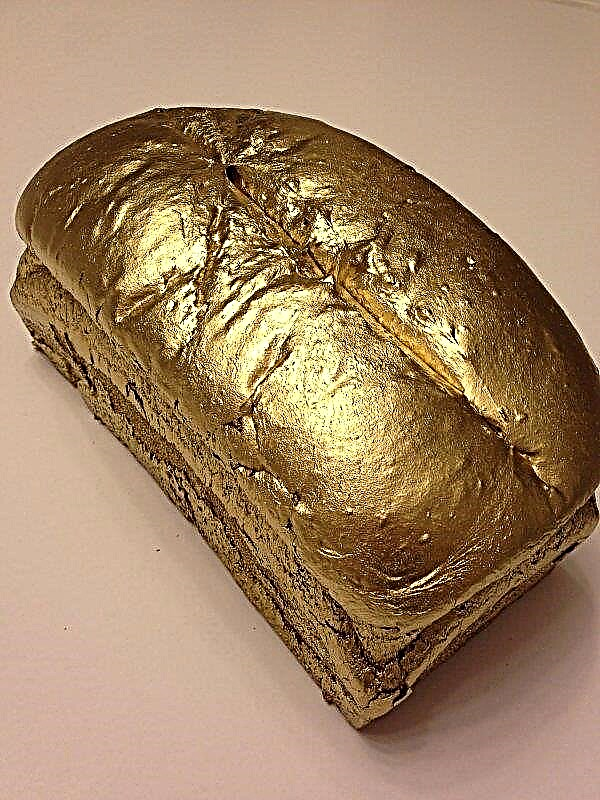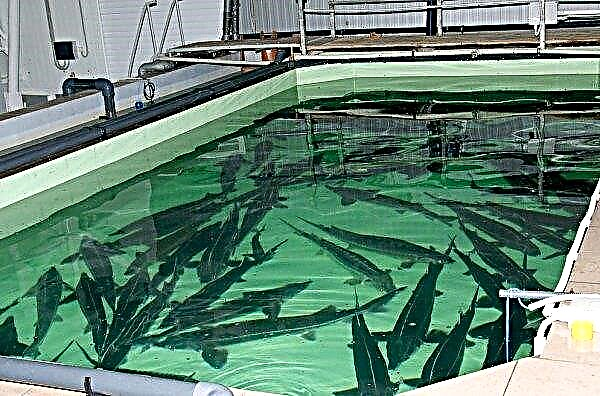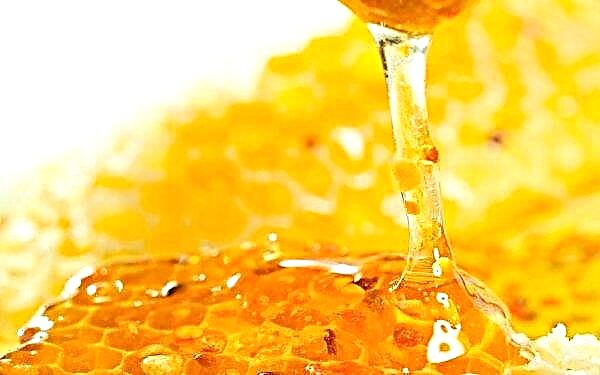Siberian cedar, or cedar pine is an amazingly beautiful noble and stately evergreen perennial that has been successfully used in the field of landscape design to create exclusive compositions. One of the main aspects that affect the decorativeness of a plant and its general condition is a healthy and strong root system. Find out what structure cedar roots have, and what their sizes depend on - find out from the article.
The structure of the cedar root system
For the successful cultivation of Siberian cedar, it is important to know how its root system is built, since the care of the culture and the application of specific agrotechnical methods depend on this in many respects. Compared to ordinary pine, cedar roots have a surface character and, to a greater extent, are located in the upper 20-cm layer of soil.
Did you know? Fruiting in the Siberian cedar begins only at 25 years old. At the same time, new fruits - cones appear every 5 years.
What do the roots look like?
The system of roots of the Siberian pine is presented in the form of a short rod root, from which lateral processes departing in different directions, having small root hairs on their tips. Such small hairs serve as raw materials for the development of mycorrhiza, a fungus root consisting of a symbiosis of fungi and root processes of plants.

Thanks to the mushrooms that “settle” on the roots, perennial nutrition takes place and, thereby, the area of soil feeding of cedar increases. At the same time, the fungus receives sugar from the pine and minerals required for its vital functions.
Important! Plants that have “rich” mycorrhiza on the roots are characterized by strong growth, a lush crown and excellent immunity.
When a tree is planted on light, air- and moisture-permeable soils, a short spine root is overgrown with powerful, going deep into the ground, anchor roots, reaching a length of up to 2-3 m. Similar root shoots paired with root paws allow the plant to hold firmly on the soil.
The accessory root system enables the cedar to successfully grow on mountain slopes, thin rocky soils. Root processes tightly embrace stones, easily penetrate cracked rocks, and are firmly fixed there.

If the soil on which the cedar grows is too dense and hard, then over time the surface roots begin to die out, due to which the plant growth slows down, its yield indicators and decorative properties fall.
And, on the contrary, in areas where a thick layer of natural litter is accumulated, for example, from needles or fallen leaves, the cedar root system is overgrown with a layer of new subordinate roots, which activate the growth and development of perennials, increase its productivity and stability.When the roots are visible from the outside
The predominant mass of root processes near the cedar is concentrated in the upper 20-cm layer of soil. In the process of development in young plants, an intensive growth of the adventitious roots and the main core root is observed.
 When cedar grows on rocky soils, where the cold climate prevails, you can often notice the roots of the culture, which are visible outward.
When cedar grows on rocky soils, where the cold climate prevails, you can often notice the roots of the culture, which are visible outward.
They tightly cover stones or rocks, which improves the resistance of perennials. The presence of such a surface root system also makes it possible to “settle” in pine on cold peat bogs.
How roots grow and develop
The root system of Siberian cedar is aerobic, therefore, for its full development, it needs drained, light and nutritious soils. Young seedlings have surface roots, which are presented in the form of horizontal roots, concentrated in the upper 10–20-cm layer of the earth. Over time, a core root is formed with numerous lateral processes on which the fungus root is located.
Important! The absence of mycorrhiza on the roots can cause withering of the cedar and its premature death.
Adnexal roots are not numerous, the main root stem grows the first 20-30 years, while rarely sinking into the soil more than 80 cm. By the age of 40, the root system is fully formed and acquires the basic features characteristic of the described plant species. Further, only the elongation and thickening of the roots occurs.
After 40 years, the intensity of root development will be largely determined by environmental conditions and the presence of other plantings near the tree. For example, at the edge of a forest where there are no large trees nearby, the root system will be 5–6 times larger than that of a plant growing in the thick of the forest.

When growing on moist, nutritious and breathable soils with a light mechanical composition, the plant forms powerful root processes of the anchor type, which allow it to be resistant to wind, heavy rainfall, etc. If the culture grows in mountainous areas, then instead of anchor roots superficial are formed, making it possible to stay on slopes and stones.
The size of the root system and its dependence on the species and variety
Siberian cedar belongs to the category of slow-growing plants, since the period of its vegetation is quite short and is 40–45 days. The root system develops intensively in the first 20-30 years, when the root root is actively growing, then its development will depend on the conditions and location of growth, as well as the presence of “neighbors” near it.
After 40 years of growth, cedar slows down. The root system, which is fully formed by the age of 30, continues to thicken and lengthen the roots. This process is influenced by the presence of other stands nearby. In trees that grow alone, the roots evenly cover an area that goes far beyond the crown.

In this case, about 11 tiers of branching of roots can be observed. For perennials growing in an environment of other trees, the root system consists of processes, most of which go deep into the soil, and only some grow in between the crowns.
Moreover, the number of root branching orders does not exceed 5–6. In places with low temperature indicators, the root system of the cedar is highly branched, and is close to the surface. In addition, the size of the root system depends on the type of culture.
Today, artificially bred varieties of Siberian pine can be divided into three types:
- tall;
- undersized;
- stunted decorative.
The larger the plant is, the larger its root system will be.
Siberian cedar is an evergreen perennial, the main distribution zone of which is considered to be the western and eastern regions of Siberia, the Urals. A good and full development of the plant provides the root system, which adapts to the specific growing conditions. With a lack of moisture and dense soil, surface root processes are formed in the plant, and when growing on light, drained soils, a powerful system forms with the main stem and anchor roots.


